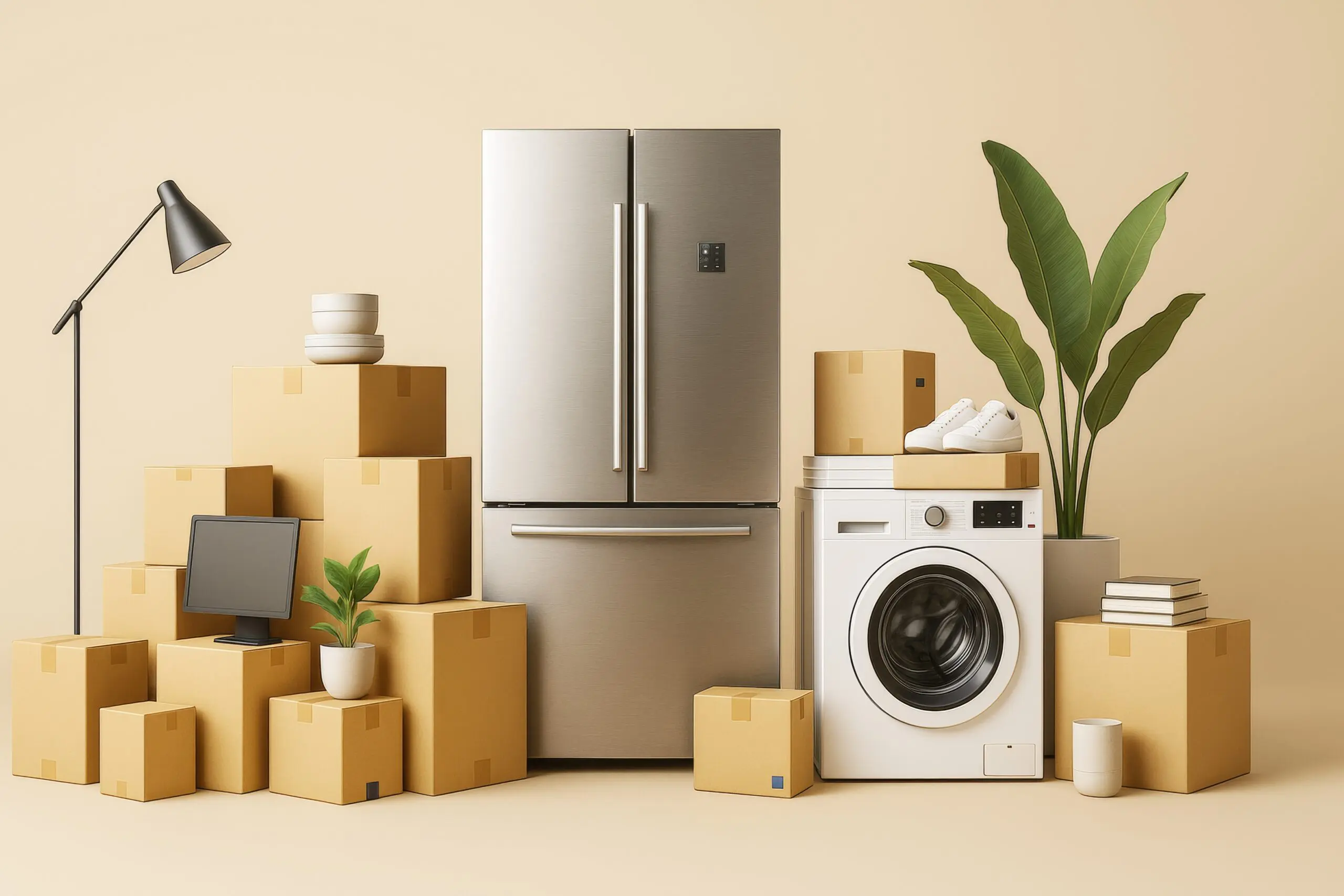Modern homes contain thousands of dollars worth of electronic devices, from entertainment systems and computers to smart home equipment and gaming consoles. Protecting these valuable and often irreplaceable items during a household move requires specialized knowledge and careful preparation. With the right techniques, your electronic devices can arrive at your new home in perfect working condition, ready to reconnect you to your digital world.
Pre-Move Digital Preparation
Start your electronics moving process by creating comprehensive digital backups of all important data. External hard drives, cloud storage services, and backup software provide multiple layers of protection against potential data loss during transit. This step proves invaluable even if your devices arrive safely, as it creates peace of mind and establishes good backup practices for the future.
Take detailed photographs of your electronic setups before disconnecting anything. Capture cable connections, port configurations, and the arrangement of components within entertainment centers or computer desks. These visual references make reassembly much easier in your new home, particularly for complex setups with multiple devices and connections.
Create an inventory list documenting serial numbers, model information, and approximate values for insurance purposes. Store this information separately from the devices themselves, either digitally or in a file that accompanies you, rather than in the moving truck.
Strategic Disassembly and Cable Management
Remove all cables, power cords, and removable components before packing electronic devices. Bundle related cables together using twist ties or cable organizers, and label each bundle clearly with masking tape, indicating which device it belongs to. This organization prevents the frustrating experience of having to sort through multiple unmarked cable bundles later.
For computer towers, remove graphics cards, hard drives, and any other components that might shift during transport. These internal parts can cause significant damage if they break loose and collide with other components during the move. Pack removed components separately in anti-static bags or their original packaging when available.
Gaming consoles require special attention to disc drives and external accessories. Remove all discs, memory cards, and external storage devices. Pack controllers, headsets, and other accessories in separate boxes to prevent them from shifting and potentially damaging the main console unit.
Choosing the Right Packing Materials
Original packaging provides the best protection for electronic devices whenever possible. Manufacturers design these boxes with custom foam inserts and precise measurements that offer optimal protection during transport. If you’ve saved original boxes, this is the perfect time to use them.
When original packaging isn’t available, invest in high-quality alternatives. Anti-static bubble wrap prevents electronic damage from static electricity buildup, while foam padding provides cushioning against impacts. Avoid using newspapers or other printed materials directly against electronic devices, as ink can transfer and potentially damage surfaces.
Select boxes that are appropriately sized to allow for adequate padding without being too large so that devices can remain stable inside. The goal is snug protection that prevents movement while providing cushioning against external impacts.
Specialized Packing Techniques for Different Device Types
Televisions and monitors require extra care due to their screens and thin profiles. Wrap screens in soft blankets or specialized screen protection before placing them in boxes. Transport flat-screen TVs upright whenever possible, as laying them flat can stress the screen and internal components.
Computers and laptops need protection from both impact and static electricity. Remove batteries from laptops when possible, and ensure all ports are covered or protected from debris. Desktop computers should have their cases secured and any loose internal components removed or properly fastened.
Audio equipment, particularly speakers and amplifiers, can be heavy and sensitive to vibration. Wrap each component individually and pack them in boxes with plenty of cushioning material. Remove any detachable speakers or components that might shift during transport.
Small electronics, such as phones, tablets, cameras, and chargers, benefit from organization in clearly labeled boxes. Use dividers or small containers within larger boxes to prevent these items from shifting and potentially damaging each other.
Climate and Environmental Considerations
Electronics are sensitive to extreme temperatures and changes in humidity. Avoid storing packed electronics in areas that experience temperature fluctuations, such as garages or attics, before the move. During transport, try to keep electronics in climate-controlled environments when possible.
If electronics have been stored in cold conditions, allow them to gradually reach room temperature before powering them on in your new home. Rapid temperature changes can cause condensation inside devices, potentially leading to damage when powered on too quickly.
Transportation and Loading Strategies
Load electronic devices in the middle of the moving truck, surrounded by other boxes that provide additional protection from impacts. Avoid placing electronics near the truck doors where they might be jostled during loading and unloading of other items.
Mark electronic boxes clearly with “FRAGILE” and “THIS SIDE UP” labels on multiple sides. Consider using bright colored tape or labels to make these boxes easily identifiable to everyone handling them during the move.
For particularly valuable or sensitive equipment, consider transporting these items in your personal vehicle rather than the moving truck. This gives you direct control over their handling and environment during the move.
Unpacking and Setup in Your New Home
Allow electronics to acclimate to their new environment before unpacking and connecting them. This is particularly important if the devices experienced temperature changes during transport. Rushing to set up electronics immediately can sometimes cause problems that patience would prevent.
Unpack and set up one system at a time, using your pre-move photographs as reference guides. Test each device individually before connecting multiple components together. This
approach helps identify any potential issues and makes troubleshooting easier if problems arise.
Take time to optimize your new setup for the different room layouts and configurations in your new home. This fresh start offers an opportunity to enhance cable management, upgrade connections, or reconfigure systems for improved performance and accessibility.
Power Up Your Fresh Start
Successfully moving your electronic devices requires careful planning, the use of appropriate materials, and attention to detail throughout the entire process. With proper preparation and protection, your technology can continue serving you seamlessly in your new home. From entertainment systems that bring family together to computers that keep you connected with work and friends, protecting these digital lifelines ensures your new home feels familiar and functional from day one.
Ready to make your tech-filled move as smooth as your favorite streaming service? Our professional team has the experience and specialized equipment to handle your valuable electronics with the care they deserve. Contact us today to ensure a seamless transition from your digital world to your new space.




